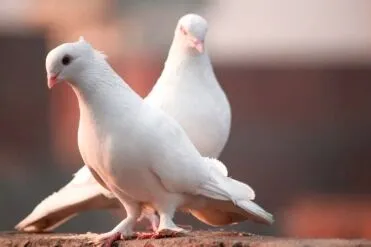Exploring the Representation of Doves: Symbolism, Cultural Significance, and Historical Context

Doves, often celebrated for their grace, symbolism, and historical significance, hold a unique place in human culture across the ages. From ancient civilizations to modern societies, these birds have been revered for their gentle demeanor, beauty, and profound symbolism in various contexts. This article delves into the multifaceted representation of doves, examining their symbolic meanings, cultural significance, and historical roles in art, religion, literature, and beyond.
Table of Contents
Toggle1. Symbolism of Doves
Doves have been universally recognized as symbols of peace, purity, and love. This symbolism transcends geographical boundaries and historical periods, making doves a consistent motif in cultural and religious practices worldwide.
1.1 Peace and Harmony:
- Ancient Cultures: Explore how civilizations such as Ancient Greece and Rome viewed doves as symbols of peace and tranquility. The story of the dove returning to Noah’s Ark in Abrahamic religions as a harbinger of peace.
- Modern Interpretations: Discuss contemporary uses of the dove as a symbol of peace, such as the Peace Dove logo used by various peace organizations and movements.
1.2 Love and Romance:
- Literary Symbolism: Analyze how doves have been used in literature to symbolize love and romance, drawing examples from poetry, novels, and folklore.
- Wedding Symbolism: Investigate the tradition of releasing doves at weddings as a symbol of fidelity and enduring love.
1.3 Spirituality and Divinity:
- Religious Symbolism: Examine the role of doves in religious texts and practices, such as Christianity (Holy Spirit) and Hinduism (as the vahana of deities like Saraswati).
- Symbolism in Art: Discuss famous artworks where doves are used to symbolize spiritual themes, like Botticelli’s “The Birth of Venus.”
2. Cultural Significance
Doves hold unique cultural significance across various societies, often representing values that resonate deeply within their cultural contexts.
2.1. Cultural Representation:
- East vs. West: Compare how doves are represented in Eastern cultures (e.g., Japan, China) versus Western cultures (e.g., Europe, America), highlighting differences and commonalities in symbolism.
- Indigenous Perspectives: Explore how indigenous cultures perceive doves, examining their symbolic significance in rituals, myths, and daily life.
2.2. Artistic Expressions:
- Visual Arts: Analyze how artists across different periods and regions have depicted doves in paintings, sculptures, and other visual media.
- Literature and Music: Discuss the use of doves as literary symbols and motifs in global literature and how they inspire musical compositions.
3. Historical Context
Understanding the historical context enriches our appreciation of why doves have become such enduring symbols in human civilization.
3.1. Historical Roles:
- Medieval Europe: Explore how doves were perceived during the Middle Ages, particularly in heraldry and courtly symbolism.
- Renaissance and Baroque: Discuss the symbolism of doves during these artistic periods, focusing on religious and mythological contexts.
3.2. Symbolism in Warfare:
- Military Symbolism: Contrast the peaceful symbolism of doves with their use in military contexts, such as pigeon carriers during wars and conflicts.
- Political Symbolism: Investigate how doves have been used as political symbols in various historical movements and revolutions.
4. Contemporary Relevance
Despite their ancient origins, doves continue to hold significant relevance in contemporary society, influencing various aspects of modern culture.
4.1. Peace Movements:
- Global Activism: Discuss the use of doves in modern peace movements and advocacy groups, emphasizing their symbolic role in promoting non-violence and reconciliation.
- Environmental Symbolism: Explore how doves are connected to environmental activism and conservation efforts worldwide.
4.2. Popular Culture:
- Media and Entertainment: Analyze the portrayal of doves in popular culture, including films, television shows, and advertising.
- Fashion and Design: Examine how designers incorporate dove motifs into fashion and interior design, reflecting trends in contemporary aesthetics.
5. Conclusion
In conclusion, the representation of doves spans continents, cultures, and centuries, embodying universal themes of peace, love, and spirituality. Their symbolism continues to evolve, adapting to modern contexts while retaining their timeless allure. By exploring the multifaceted roles of doves in art, religion, literature, and global culture, we gain a deeper understanding of their enduring significance in human civilization. Doves, with their delicate beauty and profound symbolism, remain a poignant reminder of humanity’s aspirations for peace and harmony across the world.





